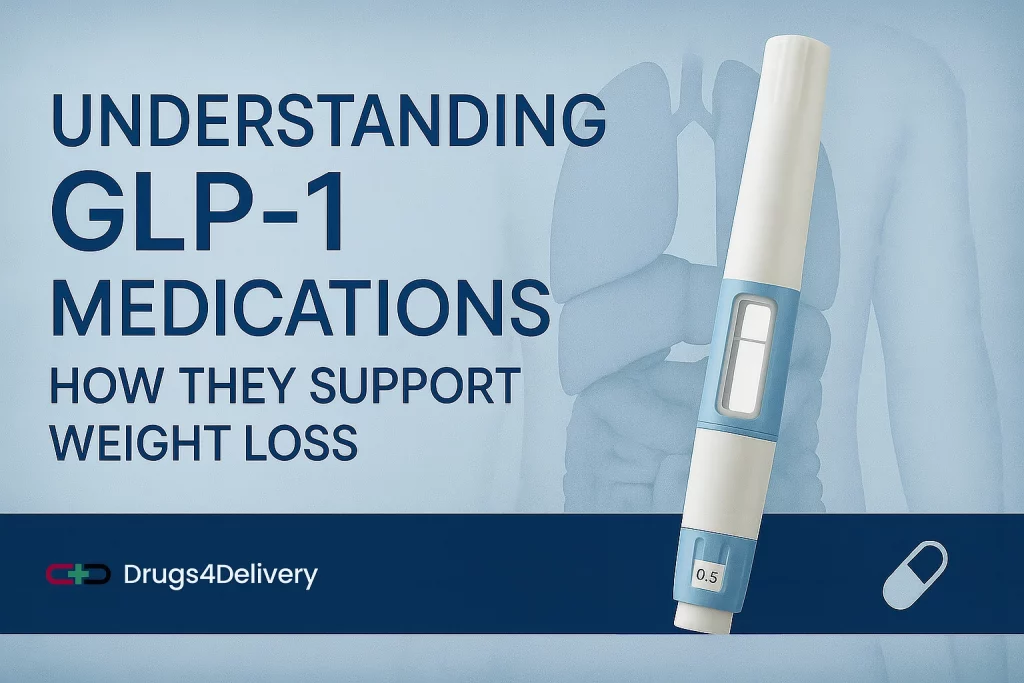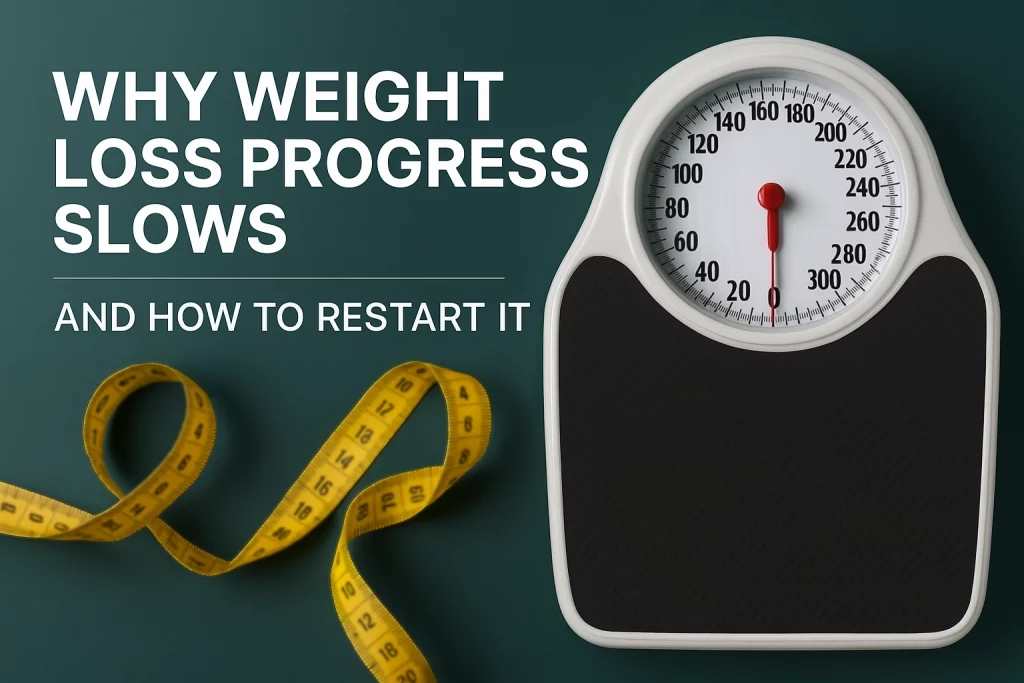GLP-1 injection treatments are commonly used to support weight management. They work by mimicking natural hormones that control appetite and blood sugar, helping reduce cravings and promoting a longer feeling of fullness.
These treatments are typically recommended for adults with a BMI over 30 (obese), or over 27 (overweight) with a weight-related health condition like high blood pressure, high cholesterol or sleep apnoea.
Some patients may have experience with GLP-1 medications such as Mounjaro. If you’re considering this type of treatment, you can find out if it’s right for you here.
Table of Contents
What Side Effects Can Happen?
Most side effects happen as your body gets used to the treatment. They are usually manageable, temporary and can improve with time and simple changes.
Nausea and Vomiting
This is one of the most common side effects, especially early on.
- Take the injection with food
- Drink water slowly throughout the day
- Eat smaller, more frequent meals
Headaches
- Stay hydrated
- Rest in a quiet, dark room
- Speak to your pharmacist before taking pain relief
Dizziness
- Stand up slowly after sitting or lying down
- Avoid driving until it passes
- Keep your blood sugar stable with regular meals
Fatigue
- Get enough sleep
- Try light activity to boost energy
Dry Mouth
- Sip water often
- Chew sugar-free gum or lozenges
Constipation
- Eat more fibre (fruits, veg, whole grains)
- Drink plenty of fluids
- Keep active
Diarrhoea
- Stay hydrated
- Avoid rich or spicy foods
Insomnia
- Keep a steady sleep routine
- Avoid screens and caffeine before bed
Faster Heart Rate
- Monitor your pulse at rest
- Avoid intense exercise if concerned
Mood Changes
- You may notice increased irritability or anxiety
- Speak with someone if it continues
Are Side Effects Dose-Related?
Yes. Research shows some side effects increase with the dosage. For example:
| Dose | Nausea | Diarrhoea | Constipation | Vomiting |
|---|---|---|---|---|
| 5 mg | 24.6% | 18.7% | 16.8% | 8.3% |
| 10 mg | 33.3% | 21.2% | 17.1% | 10.7% |
| 15 mg | 31.0% | 23.0% | 11.7% | 12.2% |
Starting at a lower dose and increasing slowly can help your body adjust.
More Serious Reactions to Watch For
While less common, some symptoms need urgent medical attention:
Pancreatitis
Severe stomach pain, vomiting, or fever
Thyroid Concerns
Lump in the neck, difficulty swallowing or hoarseness
Low Blood Sugar
Sweating, shakiness, confusion – especially if also using other diabetes medication
Allergic Reactions
Rash, swelling, difficulty breathing
Kidney Issues
Changes in urination or swelling in legs or feet
Heart Events
Sudden chest pain or trouble breathing
How to Reduce Side Effects
- Start with a lower dose (like 2.5 mg) and go up slowly
- Stay well hydrated
- Eat light, balanced meals
- Rotate your injection site if sore
If side effects are making treatment difficult, speak to your healthcare provider — small adjustments can often help.
You can explore if this treatment is suitable for you here.
Common Questions
How long do side effects last?
Most settle within a few days or weeks.
How can I manage nausea?
Smaller meals, staying hydrated and avoiding greasy foods can help.
What about injection site discomfort?
Try rotating where you inject and use a cool compress if needed.
How long does the treatment stay in your system?
Tirzepatide (the active ingredient) stays active for around 5 days.
Can I speed up how fast it leaves my body?
No — it needs to be processed naturally over time.
Feel Supported On Your Journey
Every person responds differently to treatment. Side effects are common, but they don’t mean you need to stop — in many cases, a few adjustments can make a big difference.



